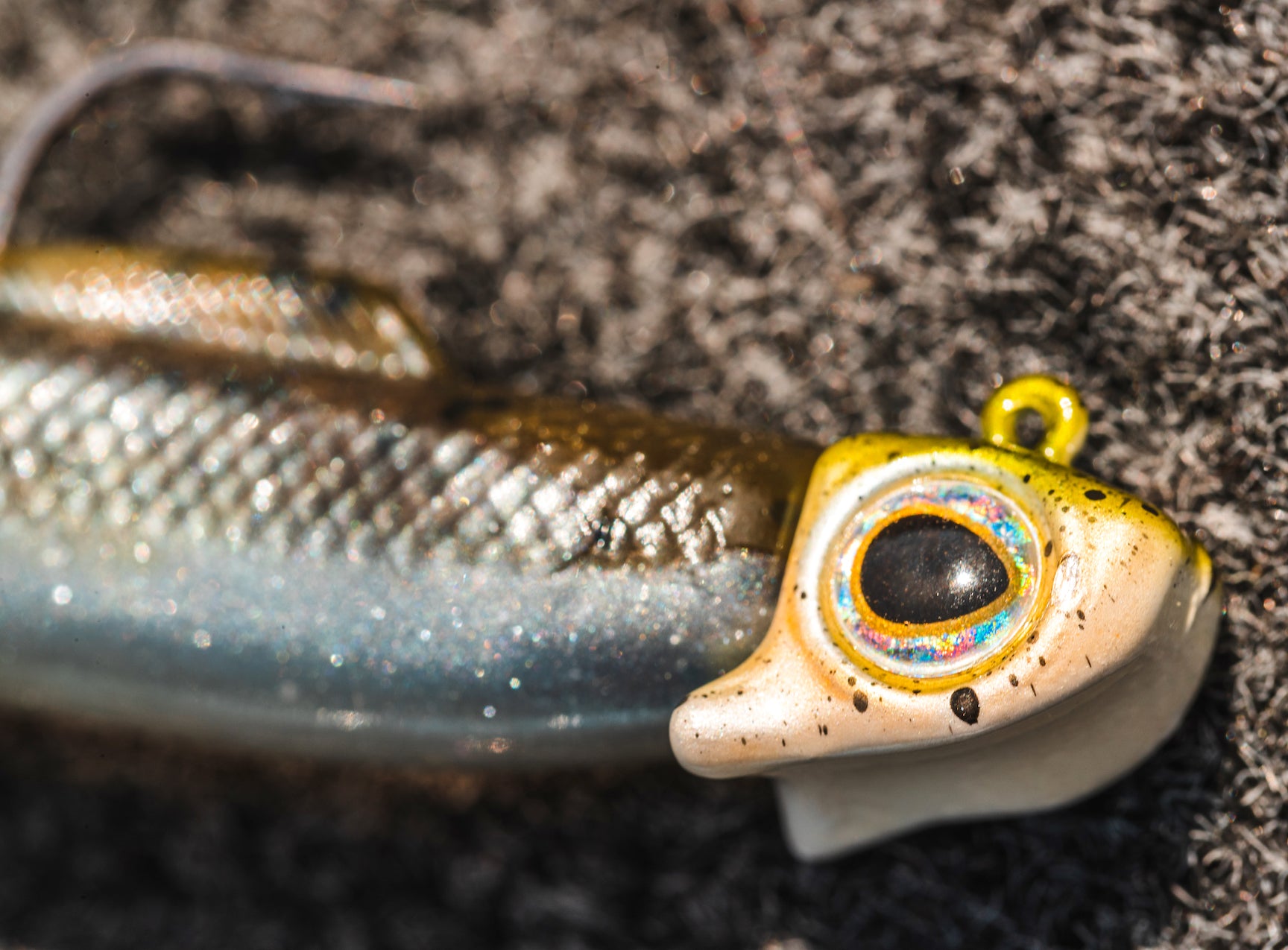
Paddletail Swimbait Perfection

Paddletail Perfection
PART 1: How to pick and rig the perfect swimbait by design, action and vibration
Ladson, SC (April 11, 2024) Nearly fifty years have now passed since the first paddletail swimbaits splashed down in U.S. waters, the earliest designs having likely originated in France. Today, paddletails have almost singlehandedly rewritten the rules of soft plastics engagement. Fans of catching bass, crappie, walleye and inshore slams nearly always cast these ingenious tail-driven baits, each version capable of different retrieve speeds, actions and the almighty thump.
And yet, what is likely the most popular and productive of all active softbait profiles is curiously, the least understood.
Ask your smartest fishing buddies to explain, for example, the differences in tail shape, size and angle and how these factors affect lure action. If one in ten can articulate the details or the distinctions, reward ‘em with a front-boat position and the first fifty casts of the day. If not, read on and unlock the subtle secrets to paddletail success.
An array of Z-Man paddletails (L to R):
DieZel MinnowZ™, SwimmerZ™, Scented PaddlerZ™, Swimmin' Trout Trick™, Slim SwimZ™.
Tail Angle, Anatomy & Action
When designing or selecting a paddler, the primary consideration is hydrodynamics, the science that examines the motion of fluids and the forces acting on immersed objects. Few anglers better understand the balancing act of crafting a functioning paddletail swimbait than Jose Chavez, designer of numerous swimbaits and director of product development for Z-Man Fishing, producers of 13 distinct paddletail profiles.
“Beyond tail and body shape, two of the more overlooked considerations in paddletail design are hardness or softness of the material and the makeup of the tail ‘bridge’—that transition section between body and tail,” notes Chavez.
“A thinner tail bridge frees the tail to pendulum and vibrate freely, but also yields less side-to-side body roll, other factors being equal. Also, if the material is too rigid, it can prevent the tail from starting up and moving, which can be further disrupted when the tail bridge is too thick. Oppositely, if you go too soft and use too thin of a bridge, the bait can start swimming with a corkscrew action, which isn’t typically favorable.”
Chavez further considers the way water flows across the tail, top to bottom and side to side. “T-tail style baits offer greater water resistance, especially when the tail itself is built broad for more surface area. These swimbaits usually thump harder and swim with a wider body roll. Separately, angled tail baits (with tails positioned at greater than a 90-degree angle to the body), produce less thump and less body roll.”
Tail shape itself, of course, also affects water resistance and thereby, movement and vibration, or thump. Elongated, teardrop shaped paddles with broader material at the base of the tail often kick in a rhythmic pendulum action—and a higher frequency vibration.
Round shaped paddles on the other hand—especially tails with flat faces forward—thump the hardest and may also shimmy dramatically. This configuration swims with a strong low frequency vibration, perhaps best suited for warm water and large, voracious predators.
Walleyes especially love paddletail / bladed jig combos, like the Slim SwimZ™ and ChatterBait WillowVibe™.
Swimbait Body Shapes
Contours and rigidity of the bait’s torso provide two final factors affecting motion and vibration. The allure of flat-sided swimbaits come from their vivid underwater flash and realistic, lower frequency vibration, which closely resemble a live baitfish. Flat-sided baits may also shine back a stronger return signal on forward-facing sonar.
Conversely, rounded body shapes offer less resistance, allowing the tail to drive the machine. Particularly when armed with narrower (teardrop or oval shaped) tails, slim or round bodied swimbaits can be excellent options for cooler water and less aggressive fish.
Solid bodied baits move with a restrained, realistic body roll—exceptional in clear water or heavy fishing pressure. Oppositely, a softer, hollow-body bait may kick and shimmy freely, aggressively, often erratically. High action baits are often ideal for summer and warm water conditions. However, one problem with extra malleable baits composed of traditional PVC plastics is that fish shred them almost immediately, rendering a single bait unusable after just a fish or two. But cast a similar swimbait profile made with soft yet hardy ElaZtech® and you’ll consistently land dozens of fish on a single bait.
Z-Man's Finesse EyeZ™ jighead fits and perfectly balances with most bass-sized paddletails.
Purpose-Driven Rigging
Standard paddletail rigging employs a jighead or a weighted swimbait hook. To alter hookup ratios, tail action and body roll, further consider hookshank length, which adjusts the bait’s fulcrum. Longer shank hooks limit movement in the back half of the bait, letting its tail kick freely while limiting its wobbling action. Beyond reducing hookup ratios, short shank hooks, meanwhile, can free the entire back end of the bait to swim with a wild flapping action, desirable during hot bites.
“Often factors equal, a jighead sporting a 90-degree line tie (eyelet positioned perpendicular to the hook shank) produces a more dramatic body roll,” adds Chavez. “Yet a pointed nose or finesse style swimbait jighead or hook with the line tie at sharper angles (i.e. 30- or 45-degrees) may help the bait track a little truer and quiver with a faster, but more restrained shimmy.
“You can also try a flat-nosed jighead, which can produce a random hunting action,” he notes. “Or, one of the coolest options right now is to rig a paddletail on a skirtless bladed jig, like the ChatterBait® WillowVibe™ or Eye Strike® ChatterBait™. Rigged on a ChatterBait, paddletails can move with a super engaging, random hunting action, where the bait goes off the rails and wanders left and right.”
Stay tuned for PART 2 - Perfect Paddletail - Jig/Hook Pairings . . .





